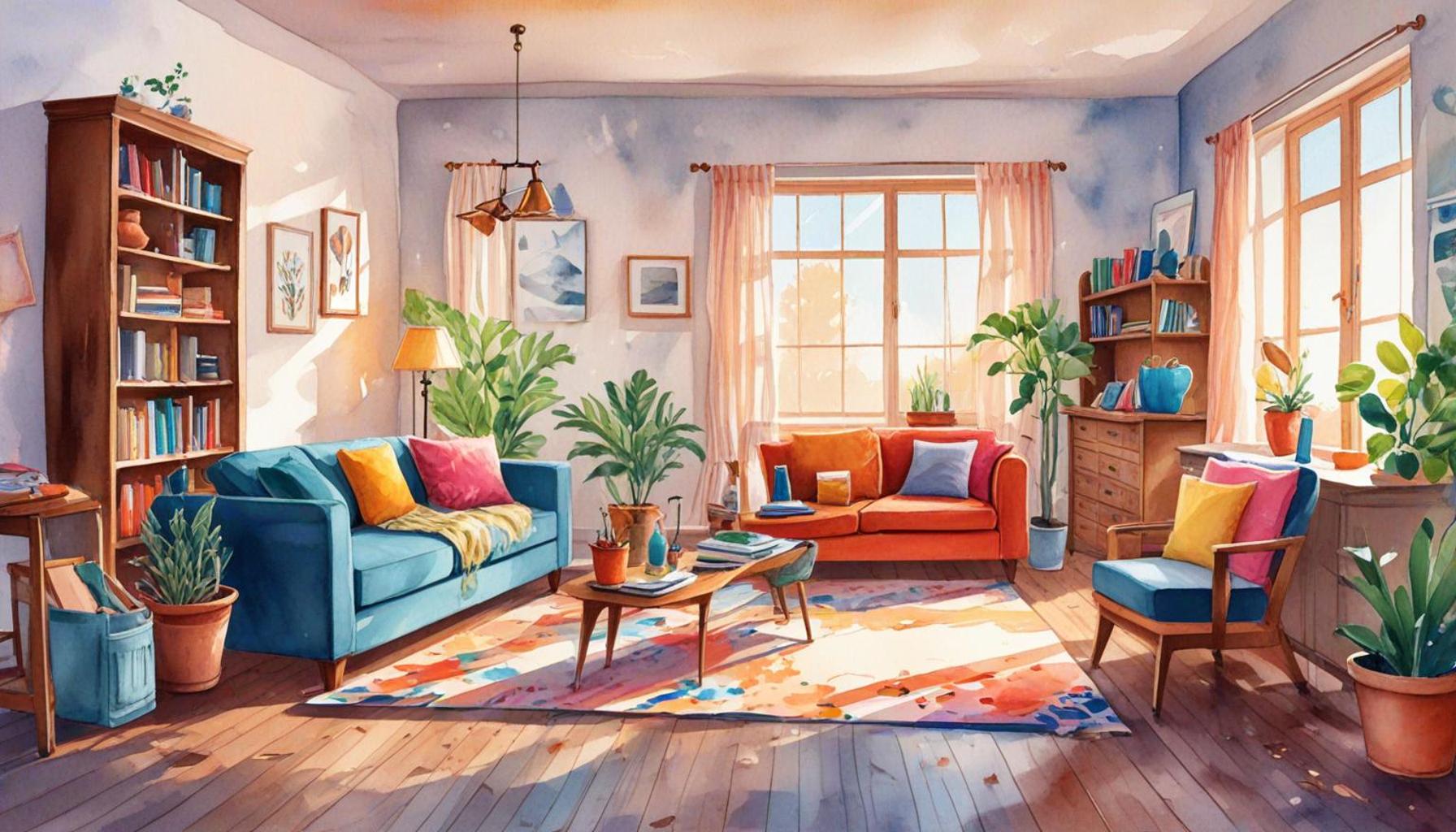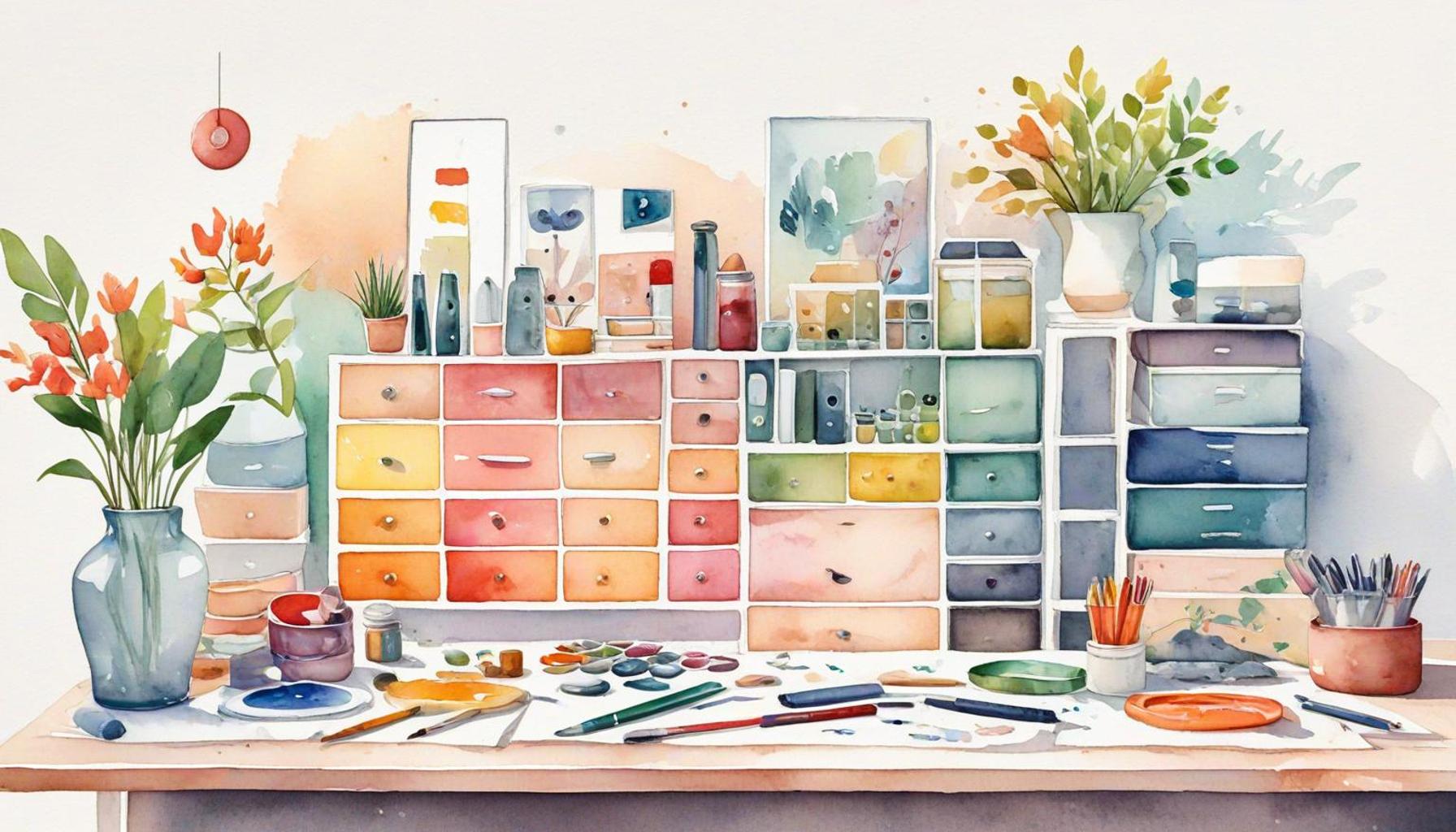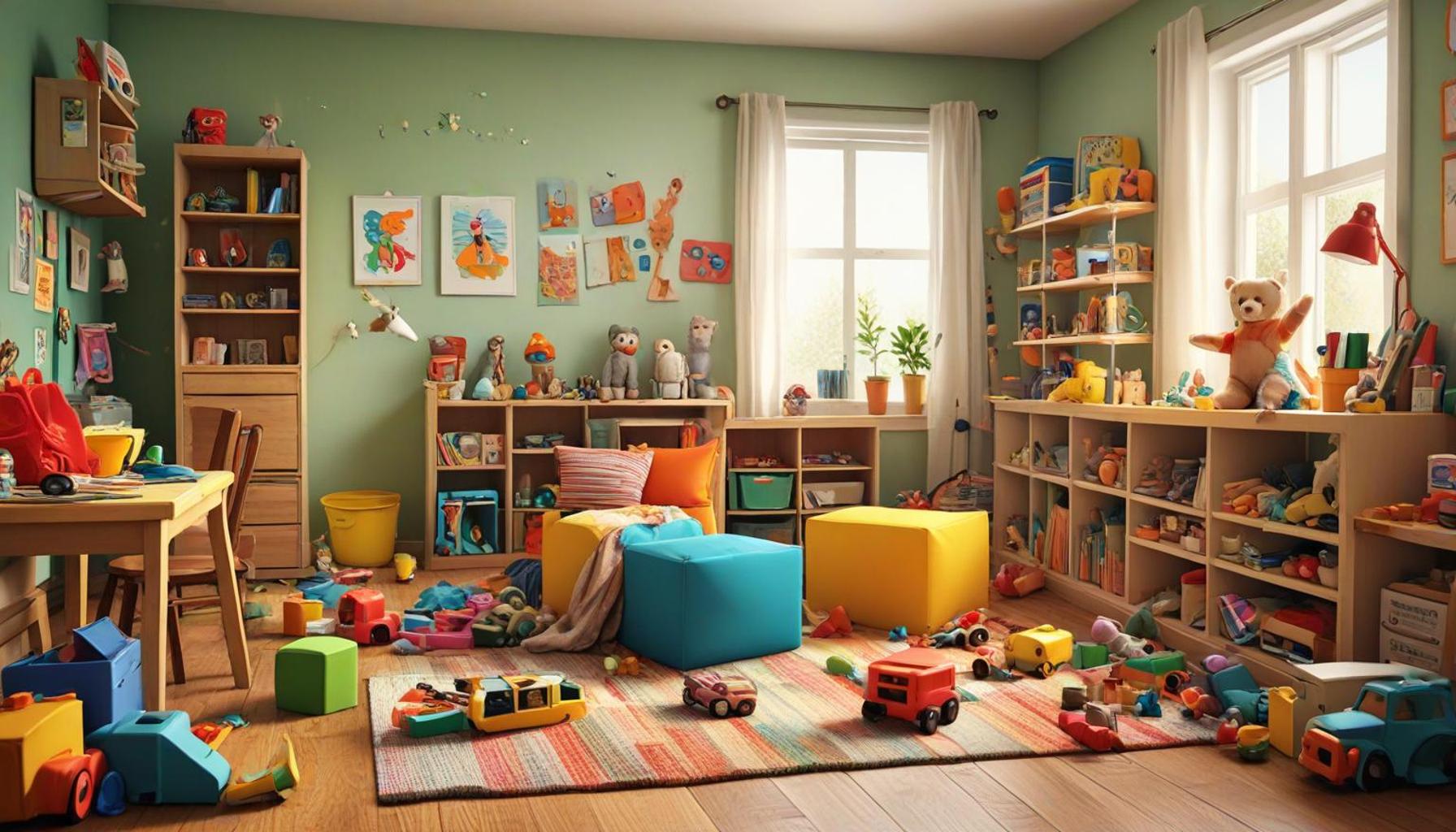Decluttering Furniture: Strategies for Creating a Cozy and Clutter-Free Environment

The Importance of Decluttering for a Harmonious Living Space
In today’s fast-paced world, a clutter-free environment is more than just a trend; it’s a lifestyle choice. An often overlooked aspect is how furniture can dominate our living spaces, making it vital to find strategies for decluttering to create a cozy atmosphere. Whether you’re working from home or entertaining guests, the arrangement and quantity of your furniture can significantly impact your comfort and well-being.
Facing Common Decluttering Challenges
Consider these common scenarios that highlight the need for decluttering:
- Dealing with overcrowded spaces that make movement challenging, such as trying to navigate through a living room filled with oversized sofas and coffee tables, leaving little room for guests to mingle.
- Struggling to find personal items buried under unused furniture. Imagine searching for a book on a crowded shelf only to discover multiple stacks of clutter overwhelming your desk.
- Feeling overwhelmed by the visual noise of too many objects. In spaces adorned with knick-knacks and excessive décor, it can be hard to focus or relax.
The Multifaceted Benefits of Decluttering
The benefits of a decluttered space extend far beyond aesthetics. A well-organized home can:
- Enhance productivity, especially in work-from-home setups. A tidy workspace with only essential items can lead to improved focus and efficiency.
- Improve your mental clarity and relaxation. Studies have shown that disordered environments can lead to increased stress levels; a serene space can foster a calming effect, contributing to better mental health.
- Create a welcoming environment for family and friends. An uncluttered living room not only looks inviting but also promotes social interactions, allowing conversations to flow freely.
Strategies for Effective Decluttering
Implementing effective strategies for decluttering furniture not only frees up physical space but also provides emotional relief. Consider these practical methods:
- The One-Year Rule: If you haven’t used an item within the last year, consider donating or discarding it. This rule helps differentiate between needs and wants.
- Zone Your Spaces: Create specific zones for different activities, such as work, relaxation, or play. This clear delineation helps reduce the temptation to clutter spaces designed for particular functions.
- Regular Maintenance: Make decluttering a routine activity by dedicating time each week or month to assess your space and remove unnecessary items.
As you navigate through various techniques, you can begin to reclaim your home and foster a space that nurtures comfort and peace. Ultimately, your living space can reflect a well-curated environment, leading not only to functional living but also to an uplifting atmosphere where creativity and connection can flourish.

Dive Deeper: Click here to discover how mindfulness can enhance your organization skills
Understanding the Psychology of Clutter
Before diving into practical decluttering methods, it is essential to understand the psychology behind clutter and its impact on our emotional well-being. Furnishings often serve as emotional bookmarks, reminding us of various experiences, whether positive or negative. This attachment can make it challenging to part with certain pieces, leading to a cycle of accumulation. Research indicates that clutter can overwhelm the mind, causing feelings of anxiety and disorganization. A cluttered space can also diminish energy levels, making it harder to focus on daily tasks.
The Emotional Attachment to Furniture
Furniture is not just functional; it can symbolize memories, status, and our personal style. However, holding onto items that no longer serve us can weigh more heavily than we realize. Consider the following:
- Sentimental Value: Many individuals have various pieces handed down through generations or received as gifts. While these items can have great sentimental value, it is crucial to assess their current utility and role in your home.
- Style Evolution: Just as our personal tastes evolve, so too should our living spaces. What once was a must-have piece may no longer align with your aesthetic or functional needs. Reassessing furniture periodically can refresh your space.
- Fear of Regret: The thought of letting go often stems from the fear of regretting the decision. However, embracing a minimalist mindset can actually lead to greater satisfaction in the pieces you choose to keep, as each item contributes to a cohesive and functional environment.
Evaluating Your Space
A successful decluttering process begins with a thorough evaluation of your living area. Assess the flow of your space and consider the following questions:
- Are your furniture pieces proportionate to the size of the room?
- Do you have sufficient room to move freely amongst your furniture?
- Is each piece functional, or are there items that serve little purpose beyond taking up space?
Involving family members in this assessment is crucial. Together, you can gauge how well the current furniture arrangements meet your collective needs, leading to a more unified living environment.
Streamlining Your Furniture Arrangement
After evaluating your space, the next step is streamlining your furniture arrangement. This can greatly enhance the visualization of space and improve overall functionality. Pay attention to the following:
- Anchor your room: Start with a central piece, such as a sectional or coffee table, to create balance and structure.
- Use Multi-Functional Furniture: Consider incorporating versatile pieces like ottomans with storage, foldable tables, or modular sofas that can adapt to your needs.
- Embrace Negative Space: Allowing for empty areas can create a more open and inviting atmosphere. This is especially important in smaller rooms to avoid a cramped feeling.
By focusing on the psychology of clutter, evaluating your space, and optimizing your furniture arrangement, you can take vital steps toward creating a cozy and clutter-free environment that nurtures both comfort and functionality. This foundational approach paves the way for further decluttering strategies that will ultimately enhance your living experience.
| Category | Advantages |
|---|---|
| Space Optimization | Allows for more functional living space by eliminating excess |
| Enhanced Aesthetics | Creates a visually pleasing and inviting atmosphere |
| Reduced Stress | A clutter-free environment promotes mental clarity and peace |
| Easy Maintenance | Simpler cleaning routines with less furniture to manage |
To create a truly cozy and clutter-free environment, employing specific decluttering strategies can be transformative. Begin by identifying areas where excess furniture accumulates, such as living rooms and bedrooms. Segregate each piece based on its functionality and emotional value. Ask yourself: does this chair promote relaxation, or is it simply occupied by clothes? Adopting a minimalistic approach doesn’t just enhance the space visually; it can also have a profound impact on your mental well-being. An open, airy environment significantly reduces stress, enabling you to focus on what truly matters. Consider investing in multifunctional furniture which can serve dual purposes, further maximizing your room’s efficiency. Scheduling regular decluttering sessions can help maintain order and transform your space into a sanctuary. Whether it’s adopting the “one in, one out” rule or donating items you no longer use, each strategy contributes to a peaceful home environment. This focus on decluttering not only beautifies your space but also enriches your life, granting you the serenity to thrive.
DISCOVER MORE: Click here to learn about the 30-day rule for decluttering</
Implementing Decluttering Strategies
Now that we’ve established the importance of understanding the psychology behind clutter and assessing the functionality of your living space, it’s time to delve into actionable decluttering strategies. By following these guidelines, you can effectively create an environment that is not only cozy but also free from unnecessary distractions.
Sort and Categorize
A valuable strategy for decluttering is the sorting process, which allows you to divide your furniture into specific categories. This method not only brings focus to what you have but also highlights what can be removed. Start with the following categories:
- Keep: Items that you love and that serve a clear purpose in your daily life should remain in your space.
- Donate: Furniture that no longer fits your needs or has duplicates can be donated. Organizations like Goodwill or Habitat for Humanity often welcome such contributions.
- Recycle or Dispose: Broken or unusable items should be recycled responsibly or disposed of to avoid clutter in your home.
This sorting approach simplifies decision-making and enables you to visually assess your items, encouraging a more mindful selection process.
Establish the One-Year Rule
To help mitigate emotional attachments to furniture, consider implementing the one-year rule. This guideline proposes that if you haven’t used or appreciated an item in the past year, it may be time to let it go. This strategy serves as a practical timeframe that reduces sentimentality and allows you to focus on what genuinely enhances your living experience.
Optimize Vertical Space
Utilizing vertical space is a wise technique to combat clutter without sacrificing comfort. Many people overlook walls as potential storage solutions. Think about incorporating shelves or wall-mounted racks to elevate decorative items or books. This practice not only creates a sense of openness in your room but also minimizes surface clutter on furniture. Here are some options:
- Floating Shelves: Perfect for showcasing art or plants, floating shelves keep decorative pieces visible without consuming floor space.
- Wall Hooks: Ideal for hanging bags or hats, wall hooks contribute to a tidy appearance by eliminating the need for extra furniture.
- Vertical Cabinets: Tall, slim storage solutions can accommodate items while maintaining floor space for movement.
Curate Your Decor
While decluttering furniture, pay attention to the decor that surrounds your space. Decorative items can quickly become clutter if not curated thoughtfully. Strive for a minimalistic approach by selecting a few standout pieces that resonate with you. Consider these tips for curating decor:
- Limit Choices: Choose no more than five decorative items per surface to maintain balance and prevent overcrowding.
- Mix Textures: Use different textures to add visual interest without overwhelming the senses—think wood, glass, and textiles.
- Theme and Color Palette: Stick to a consistent theme or color palette to create harmony and prevent visual chaos.
Incorporating these decluttering strategies will help you reclaim your space from excessive furniture and decor while contributing to an overall inviting atmosphere. By focusing on organization, functionality, and aesthetic cohesion, you will achieve the oasis of calm and comfort that a truly cozy home embodies.
DISCOVER MORE: Click here to enhance your space
Conclusion
In conclusion, the journey towards a clutter-free environment begins with understanding the significance of each piece of furniture in your home and its impact on your overall well-being. By implementing practical strategies such as sorting and categorizing, adhering to the one-year rule, and optimizing vertical space, you can effectively transform your living space into a sanctuary of calm and comfort.
Moreover, curating your decor not only enhances aesthetic appeal but also promotes a sense of tranquility, making your home a reflection of your personality rather than a storage zone for unused items. It is essential to approach decluttering with a mindset of mindfulness and intentionality, as it allows you to foster a space that truly resonates with you.
As you embark on this transformative process, consider the long-term benefits of maintaining a cozy environment. A clutter-free space leads to improved focus, reduced stress, and a heightened sense of happiness. If you find yourself overwhelmed, remember that decluttering is a gradual process; it’s okay to take small steps.
Ultimately, by prioritizing functionality and embracing a minimalistic approach, you will not only simplify your home but also enhance your lifestyle. Take the opportunity to reclaim your space – your cozy oasis awaits, inviting you to enjoy the clarity and comfort of a well-organized environment.


